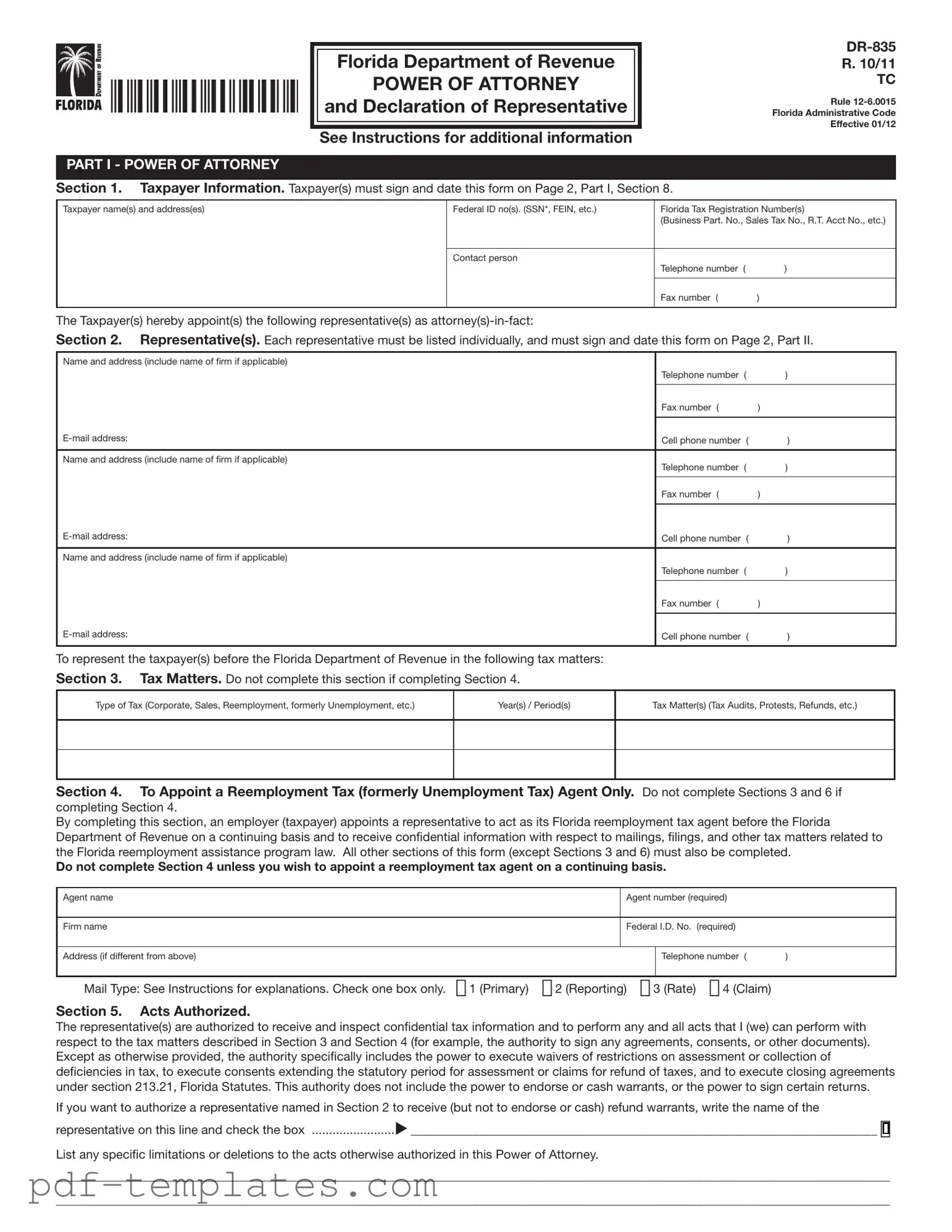The IRS Form 2848, also known as the Power of Attorney and Declaration of Representative, is similar to the Tax POA DR 835 form in that both documents authorize an individual to act on behalf of a taxpayer. The IRS Form 2848 allows the designated representative to receive confidential tax information and represent the taxpayer before the IRS. This form is often used for federal tax matters, while the Tax POA DR 835 is specific to state tax issues in certain jurisdictions. Both forms require the taxpayer's signature and the representative's information, ensuring that the authorization is clear and legally binding.
When considering the various power of attorney forms, it's essential to note that these documents are crucial in providing individuals with the ability to manage their affairs when they cannot do so themselves. Whether for medical or tax purposes, understanding the options available is key. For example, the All California Forms present a comprehensive resource for those needing guidance on medical and legal decisions, ensuring that one's preferences are honored in every situation.
Another document that shares similarities with the Tax POA DR 835 is the IRS Form 8821, which is a Tax Information Authorization form. While the Tax POA DR 835 grants authority to act on behalf of the taxpayer, Form 8821 only allows the designated person to receive tax information without the power to represent the taxpayer in dealings with the IRS. This distinction is important for those who need to share their tax details with a third party but do not require full representation. Like the Tax POA DR 835, Form 8821 requires the taxpayer's consent and specifies the tax matters involved.
The Durable Power of Attorney (DPOA) is another document that serves a similar purpose, but it extends beyond tax matters. A DPOA allows a person to make decisions on behalf of another individual in various areas, including financial and legal affairs. This document remains effective even if the principal becomes incapacitated, unlike the Tax POA DR 835, which is typically limited to specific tax-related matters. While both documents involve granting authority, the DPOA is broader in scope and can cover a wider range of decisions beyond just tax issues.
Lastly, the Limited Power of Attorney (LPOA) is akin to the Tax POA DR 835 in that it provides specific powers to an individual for a defined purpose. An LPOA allows the designated agent to perform certain actions on behalf of the principal, such as managing financial transactions or handling legal matters. This document can be tailored to limit the authority granted, similar to how the Tax POA DR 835 is limited to tax-related issues. Both documents require clear terms outlining the scope of authority and the duration of the power granted, ensuring that the principal's intentions are honored.
